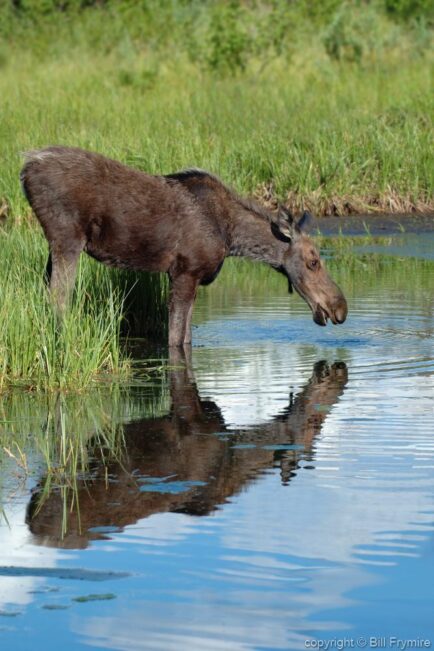Concerning the Moose

Would you like to use this image? Click here to use it.
The moose is one of the most intrinsically Canadian animals one could bring to mind, gigantic and droopy, named by the Algonquian peoples roughly “twig eater/bark stripper,” they can be found in the woods, on beer bottles, and etched on roads signs from British Columbia to Newfoundland. It turns out the Canadian government has really cultivated this relationship. In my search for factoids about Canada’s gentle giant, I stumbled upon our history of transplanting moose to the far corners of our great nation.
Until 1878 there were no moose in Newfoundland, something that should not be surprising if one has seen a map of the area, but something I had always taken for granted because there are a lot of moose in Newfoundland 120,000 in fact, the most in North America actually! In 1878 a bull and cow moose were shipped to the island and this transplant didn’t take, a second group of moose were introduced in 1904 that lead to the massive amount found there today. While the moose population in Newfoundland has exploded Nova Scotia’s moose numbers had to be bolstered via a shipment to Cape Breton from Alberta in the 1940s. Today there are approximately 1000 Nova Scotian moose and 5,000 Cape Breton immigrants. Prince Edward Island is
the only mooseless province in our country and I for one would support a shipment of Canada’s most iconic ungulate to the “Garden of the Gulf,” after all, its a tradition over 100 years old.















